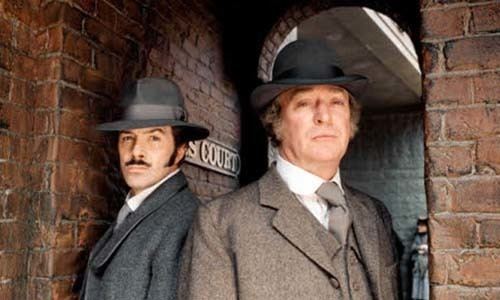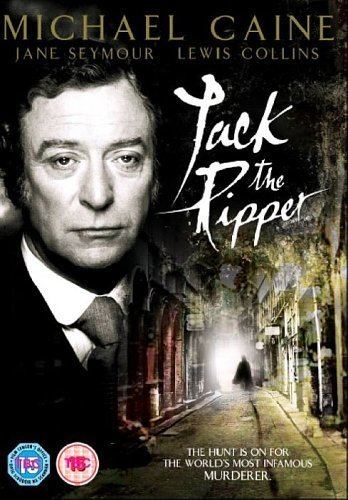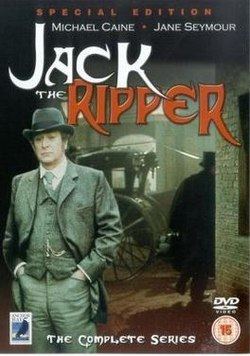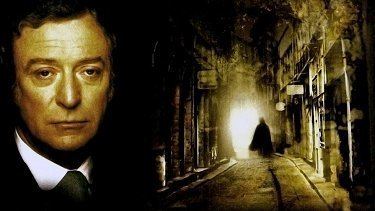7.8 /10 1 Votes
Initial release 21 October 1988 Music director John Cameron | 7.7/10 IMDb Director David Wickes | |||||||||||||||||||||||||||||||||
 | ||||||||||||||||||||||||||||||||||
Cast Michael Caine, Armand Assante Awards Golden Globe Award for Best Performance by an Actor in a Mini-Series or Motion Picture Made for Television Similar Movies about murder, Mysteries | ||||||||||||||||||||||||||||||||||
Jack the Ripper is a 1988 English television film drama about the notorious Jack the Ripper murder spree in Victorian London.
Contents

The film was produced to coincide with the 100th anniversary of the Whitechapel murders, and was originally screened on British television in two 90-minute episodes, broadcast on consecutive evenings, in October 1988, to coincide with the dates of some of the original events, advertising itself in advance as a solution to the century old mystery of the murderer's identity using newly discovered original evidence. The broadcasts were a cause celebre in English television production in the late 1980s, and gained high audience viewing figures with critical acclaim.

Storyline

London, autumn 1888. Chief Inspector Frederick Abberline of Scotland Yard is assigned by his superiors to investigate the murder and brutal mutilation of a prostitute in the East End of London. As the mutilated corpses of other "shilling whores" turn up in the same area, London's tabloid journalists - particularly Benjamin Bates of The Star - whip up a public frenzy. The killer is nicknamed "Jack the Ripper" after a letter bearing that name and supposedly from the killer, is forwarded to Scotland Yard. As the Ripper terrorizes London, public outrage erupts throughout the country, and Police Commissioner Sir Charles Warren fears that a revolution is in the air in London's East End.

There is no shortage of suspects for Abberline and his partner, Sergeant George Godley. These suspects include the American actor Richard Mansfield (appearing in the play Strange Case of Dr Jekyll and Mr Hyde in London); police surgeon Dr Henry Llewellyn; socialist agitator George Lusk; Queen Victoria's clairvoyant Robert Lees; the Queen's grandson Prince Albert Victor; and Dr Theodore Dyke Acland, the son-in-law of Sir William Gull, Royal Surgeon to Queen Victoria and expert on diseases of the brain. The police and the authorities want the murders solved at any cost, but Abberline and Godley face huge obstacles as they search for the truth - and hindrance from their superiors when the killer is finally unmasked.
Background

Using historical characters involved in the genuine 1888 hunt for the killer, Jack the Ripper was written by Derek Marlowe and David Wickes and directed by Wickes. The series drew heavily on the same discredited Masonic/Royal Family conspiracy theory as the 1978 film Murder By Decree, and later in From Hell (2001). This theory was first put forward in the 1960s by Thomas E. A. Stowell who published his claims in a November 1970 issue of The Criminologist. The theory was later turned into the bestselling Jack the Ripper: The Final Solution (1976) by Stephen Knight. The 1988 series dispenses with the fictional Sherlock Holmes who uncovered the conspiracy in Murder By Decree and instead concentrates on the real-life Whitechapel detective Frederick Abberline, as assisted by Sergeant George Godley.
The series is constructed as a Whodunit in which viewers are led to suspect, at various points, that Prince Albert Victor, Richard Mansfield, George Lusk, Dr. Henry Llewellyn or Dr. Theodore Dyke Acland could be Jack the Ripper. Before Jack the Ripper was broadcast, director/co-writer David Wickes claimed that he had been allowed unprecedented access to the Scotland Yard files on the Ripper case and stated that his production would be revealing the 'true' identity of Jack the Ripper for the first time. After pressure from Ripperologist Melvin Harris and others, Wickes was forced to withdraw this claim. Nevertheless, the series begins with a disclaimer on behalf of the production staff, stating, "Our story is based on extensive research, including a review of the official files by special permission of the Home Office and interviews with leading criminologists and Scotland Yard officials." The series' "revelation" that Sir William Gull was Jack the Ripper was not new: Stephen Knight's 1976 book alleged that Gull was the Ripper, and prior to that, the theory had been cited in the 1973 BBC TV series Jack the Ripper (two episodes of which were directed by David Wickes). Furthermore, the Ripper character in the film Murder by Decree, assigned the fictitious name "Sir Thomas Spivey," was based on Sir William Gull.
Marlowe and Wickes retained The Final Solution's contention that William Gull was Jack the Ripper, but dispensed with most of the rest of the theory: the involvement of Prince Albert Victor is dismissed as a Red herring; there is no mention of Walter Sickert, Annie Crook, an illegitimate Royal baby, blackmail, or Freemasons; and the explanation given for the murders is dementia, acquired by Gull from a stroke. The series ends with Gull's son-in-law, Dr. Theodore Dyke Acland, theorising that Gull was using himself as a case-study of multiple personality disorder (committing murders in order to understand his own multi-faceted mind). The series presents Gull acting of his own accord (with only coachman John Netley complicit in his crimes), and conspiracy only coming into play after Gull's arrest: according to the series, Gull's murders were covered up at the behest of police commissioner Sir Charles Warren to avoid a scandal, as Gull was Queen Victoria's physician. The series' denouement thus differs to Stephen Knight's claim that Warren was aware of the Ripper's identity as the crimes were being committed.
Jack the Ripper ends with the following disclaimer:
The series was originally mounted on a relatively low-budget, with interior photography shot on video-tape and location footage shot on 16-mm film (as was common practice for British television productions of the time). Filming commenced in October 1987, with Barry Foster of Van der Valk cast in the role of Abberline. Production was halted in December 1987 after the American television network CBS became interested in the project, and most of the original cast and crew were paid off.
Jack the Ripper was consequently re-tooled as an Anglo-American co-production with an $11 million budget (provided jointly by Thames Television and CBS), shot entirely on film. It was decided that a more famous actor would be required to headline the series if it was to sell in the United States, so the role of Abberline was recast with Academy Award-winning star Michael Caine (ironically, Foster had earlier replaced Caine in Alfred Hitchcock's Frenzy, when Caine refused to play a serial killer who mutilates women). The casting of Michael Caine was considered to be a major coup, as the actor was not known for doing television work. Jack the Ripper reportedly earned Caine a fee of $1 million.
In the original version of the series, Abberline's partner George Godley was to have been played by Brian Capron. He was replaced by Lewis Collins (best known as Bodie in the ITV action series The Professionals). American actor Armand Assante and British actress Jane Seymour, both well-known to American audiences, were added to the cast at the suggestion of CBS. Ken Bones, George Sweeney, Edward Judd and Kelly Cryer all played the parts they were cast for in the unfinished version of the series.
Jack the Ripper began filming in February 1988, with principal photography at Pinewood Studios. David Wickes was determined that as few people as possible should know who would be unmasked as the killer, and shot four dummy endings (revealing George Lusk, Inspector Spratling, Chief Superintendent Arnold and Sir Charles Warren as the Ripper) to put the cast and crew off the scent. He also mocked up a scene with Godley pulling William Gull from a coach in a case of mistaken identity, and then edited them all together to produce the end result. Reportedly, only eight members of Wickes' staff knew the truth before production wrapped.
The series premiered in the UK on 11 October 1988, and in the USA on 21 October 1988. (The original broadcast thus occurred within the timeframe of the centenary of the Ripper's "Canonical Five" murders, 31 August-9 November 1888.) The series enjoyed extremely high ratings on both sides of the Atlantic.
Several DVD editions of Jack the Ripper include, as extra features, audio commentary by director/co-writer David Wickes and production assistant Sue Davies, and twenty minutes of footage from the original shoot starring Barry Foster and Brian Capron.
Awards
Jack the Ripper was nominated for the following awards:
